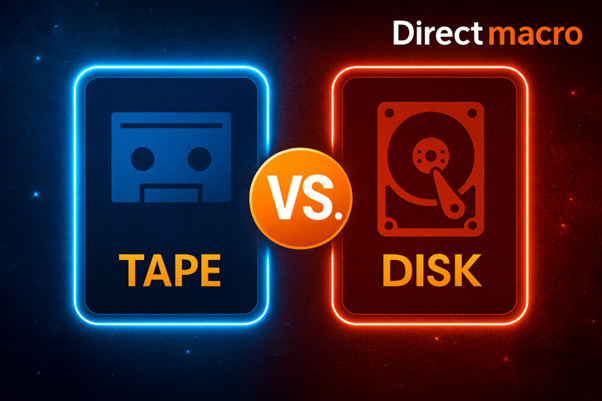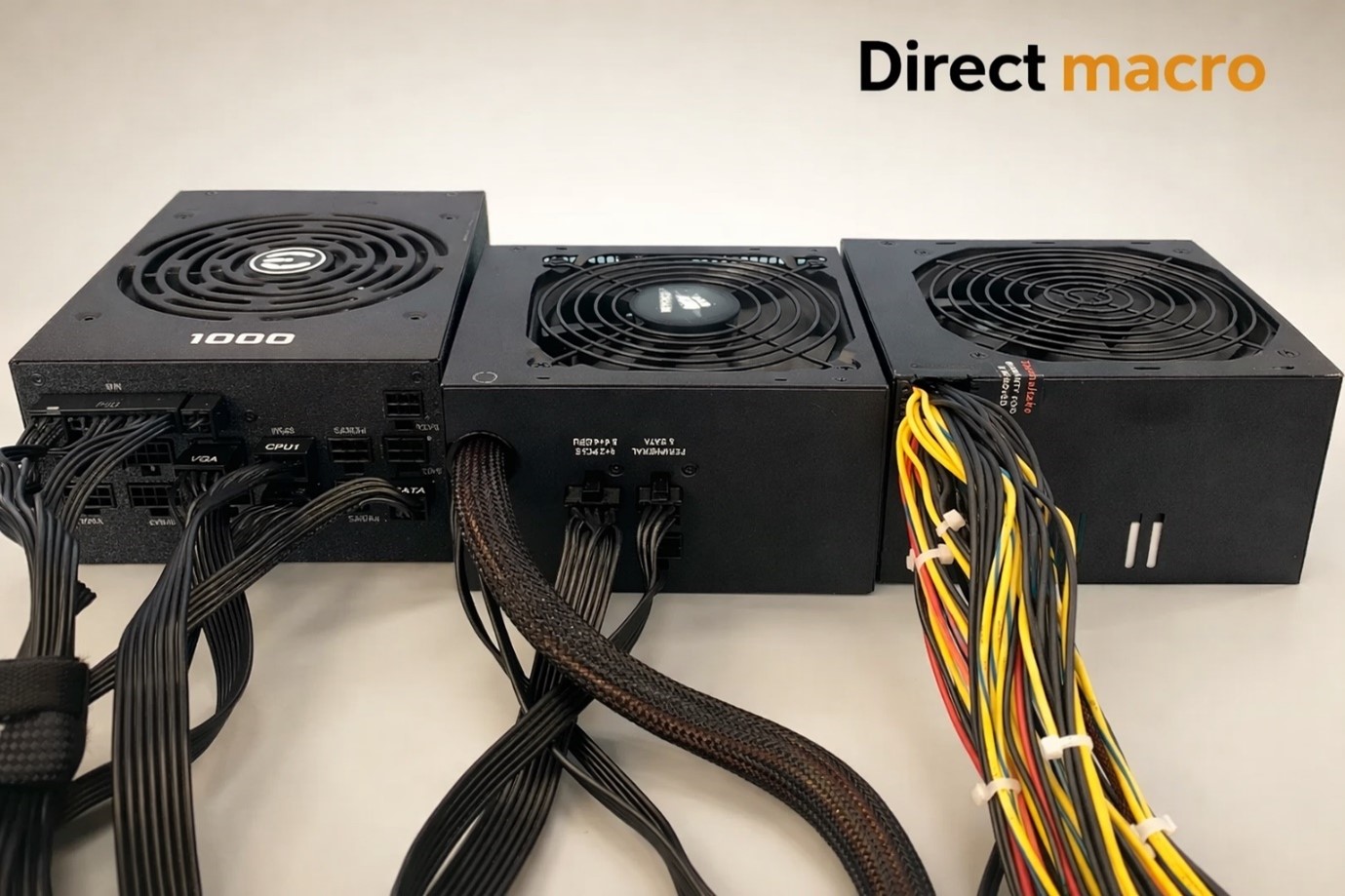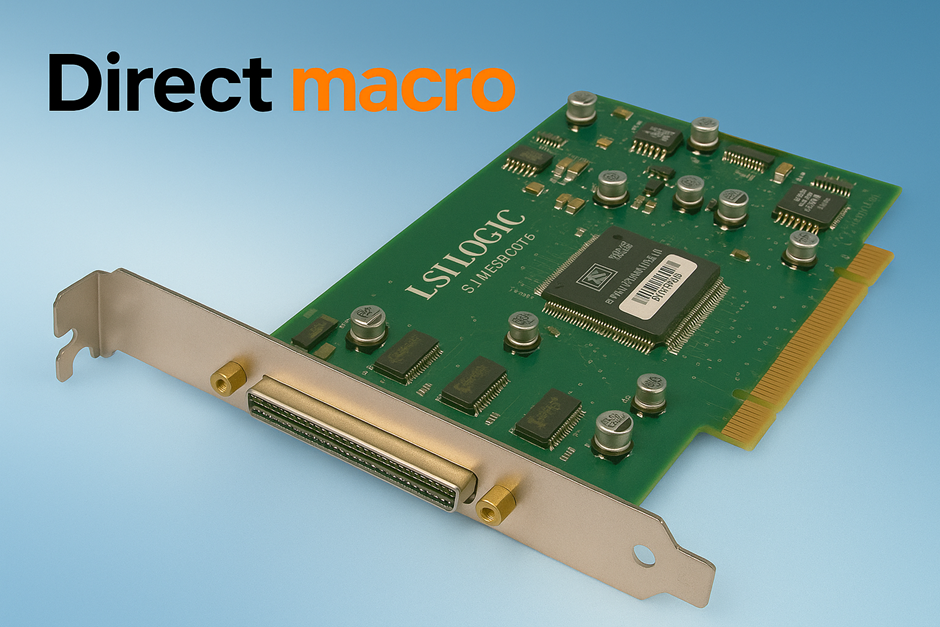Tape Storage vs Disk Storage: The Ultimate Backup Showdown
In the digital world, data is a company’s most valuable asset. Protecting it from disaster, whether from a ransomware attack, a hardware failure, or human error, is not only a priority; it is a requirement. For decades, the backup war has raged between two main contenders: tape and disk storage. Tape storage remains a powerful tool for long-term data archiving and cyber resilience, despite the popularity of disk technology in daily operations.
So, which backup strategy is best for your organization? The solution is not as simple as selecting a single winner. This guide compares the benefits and drawbacks of magnetic tape vs disk backup to help you create a secure and reliable data protection plan.
Tape vs Disk Backup: A Head-to-Head Comparison
The hardware itself tells a story with multiple purposes. A tape drive is a sequential access device, which means it reads and writes data in a linear fashion, similar to a music cassette. This design is optimized for fast, continuous data streams which make it ideal for creating a full backup of a large dataset.
In contrast, a disk drive is a device that allows for random access. It enables the drive head to jump instantly to any point on the disk platter and make it ideal for frequent, small-file transfers that occur in daily operational use, as well as quick restores. This fundamental architectural difference underpins the speed trade-offs associated with each technology.
Comparison Table
| Feature | Tape Storage | Disk Storage |
| Primary Use | Long-term archival and offline backup. | Active backup, fast recovery, and primary storage. |
| Data Access Speed | Slower random access, faster sequential transfer. Retrieval of a single file from a full tape can be slow. | Fast random access, enabling quick recovery of individual files or entire systems. |
| Cost | Lower cost per terabyte for large-scale storage, particularly concerning power and cooling. | Higher cost per terabyte, but costs are declining and may be justified by faster recovery times. |
| Reliability | Highly durable for long-term storage when stored properly. Physically isolated tapes are safe from online attacks. Prone to data degradation over decades and physical damage from mishandling. | Offers higher day-to-day reliability with technologies like RAID. However, disks can fail mechanically and are vulnerable to power outages and cyberthreats. |
| Capacity | Scalable by adding more cartridges to a tape library. Current LTO-9 tapes can store 18TB uncompressed. | Disk density has grown rapidly, with individual enterprise drives now holding multiple terabytes. |
| Security | Excellent offline security due to being physically disconnected (air-gapped) from the network. | Susceptible to network-based attacks like ransomware if not physically disconnected. |
| Power Consumption | Very low power usage, as tapes consume electricity only when actively reading or writing data. | Consumes continuous power for active operations, including cooling. |
| Management | Requires more manual handling and specialized skills for loading, tracking, and maintaining tapes. | Easily managed through software interfaces and integration with modern IT infrastructure. |
Tape Storage: The Archival Champion
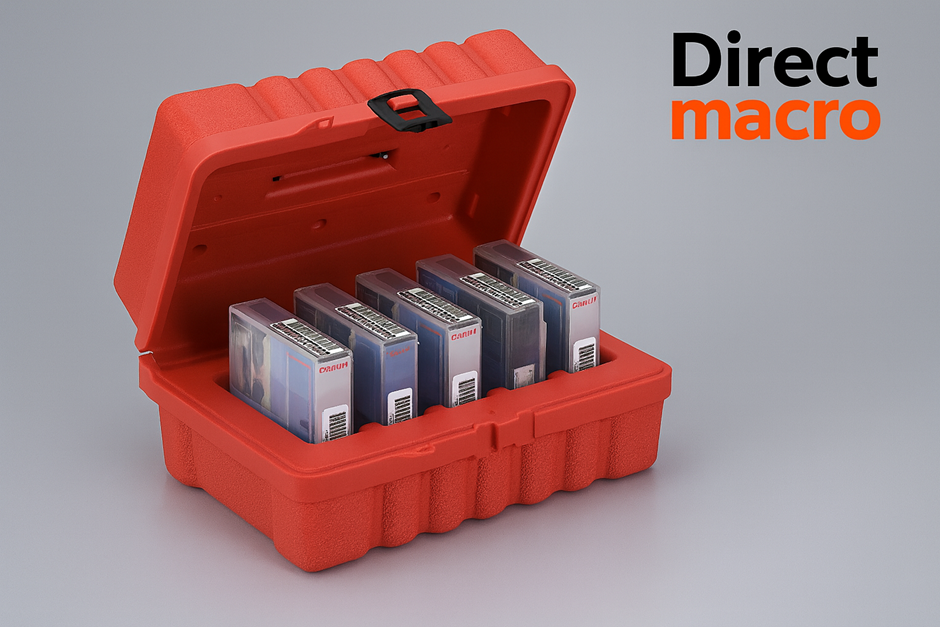
Modern magnetic tape backup technology is not outdated, contrary to popular belief. Today’s LTO (Linear Tape-Open) technology provides massive capacity, durability, and a distinct security advantage that disk storage cannot match. Let’s find out the pros and cons of Magnetic tape storage vs Disk Storage.
Pros of Magnetic Tape Backup
- Low Cost Per Terabyte: Tape is the most cost-effective option for storing large amounts of data over time. When you consider the low power and cooling requirements (tapes do not require electricity when idle), the long-term Total Cost of Ownership (TCO) is difficult to beat.
- Superior Longevity: Magnetic tapes have a much longer shelf life than hard drives. It potentially lasting up to 30 years when properly stored. They are also much more resistant to physical shocks and environmental factors such as water or drops than delicate hard drives.
- Cybersecurity Defense: Tape’s main modern advantage is its inherent air-gapped security. Once a backup is written to tape and physically removed from the network. It is completely protected from online threats such as ransomware. It generates an impenetrable, offline backup of your data that hackers cannot access or corrupt electronically.
- High Throughput for Large Data: Tape drives can transfer large amounts of data quickly. This quality makes them ideal for backups. It is designed to write data in a continuous and fast stream, which makes it ideal for moving large datasets.
Cons of Magnetic Tape Backup
- Slow Random Access: The sequential nature of tape storage is its main disadvantage for daily backups. To locate a single file on a tape, the drive must wind through it to the appropriate position, which is a slow and time-consuming process.
- Manual Management: Tape backups, unlike automated disk-based systems. It requires manual handling. It includes loading and unloading tapes which helps in managing a tape library, and physically transporting tapes to offsite storage, all of which increase the risk of human error.
- Dependent on Hardware: A single functional tape drive is required to write and read data. Backup and restore operations may be put on hold due to hardware failure until the drive is repaired or replaced.
Disk Storage: The Speed and Convenience King
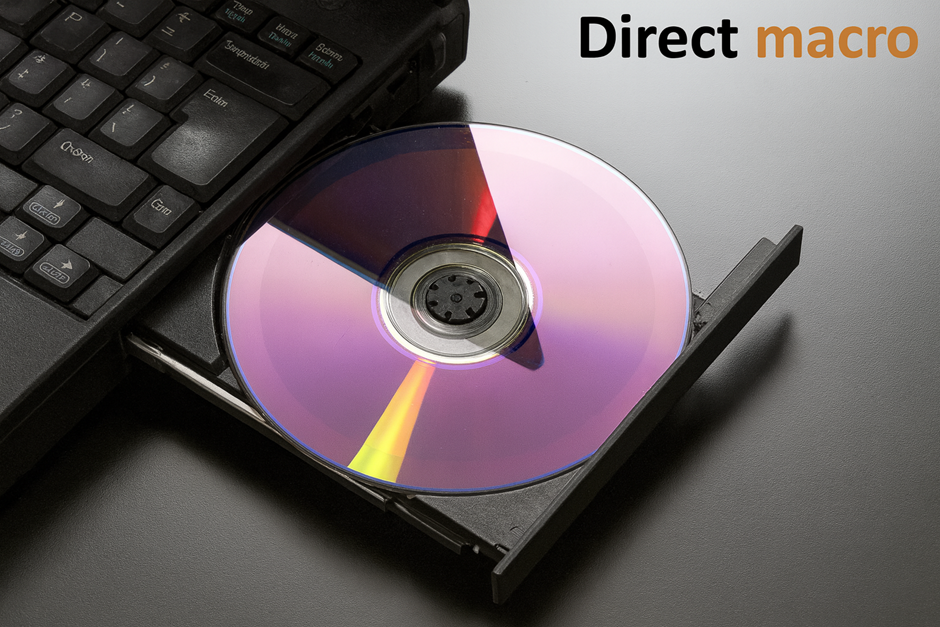
Disk-based backups, which use hard disk drives (HDDs) or solid-state drives (SSDs), are now the industry standard for daily backup operations. They provide high speed, dependability, and seamless integration with modern IT infrastructures. Let’s find out the tape vs disk backup pros and cons.
Pros of Disk Storage
- Fast Recovery: Disk drives allow for fast, random-access data retrieval. It allows you to quickly locate and restore individual files or entire systems. It helps you reduce downtime and meet Recovery Time Objectives (RTOs).
- Automation and Management: Disk-based backup solutions can be very automated. Backup jobs can run on a schedule, and the data is always “online” for immediate access. It reduces the manual labor and expertise needed to manage backups.
- Advanced Features: Modern disk drive systems enable advanced software features such as data deduplication, compression, and encryption. Deduplication reduces storage space by removing redundant data on the other hand, encryption protects data at rest and in transit.
- Seamless Scalability: Expanding disk storage is usually simple and non-disruptive. You can add more drives to a system as your data requirements grow without having to completely overhaul your setup.
Cons of Disk Storage
- Higher Initial Cost: While disk prices have dropped dramatically, the cost per terabyte for a disk-based backup system is generally higher than for a tape-based one, particularly on a large scale.
- Higher Power Consumption: Even when a backup is not in progress, a disk system consumes power continuously. It results in higher ongoing energy costs and heat generation than tapes, which only require power when reading or writing.
- Online Vulnerability: A network-connected disk-based backup system is vulnerable to cyberattacks. A ransomware contamination, for example, could encrypt both your primary data and your online backups, rendering them useless.
The Hybrid Backup Approach: A Modern Solution
In today’s fast-paced IT environment, very few businesses rely on a single backup medium. The most efficient approach is to use a hybrid model that combines disk and tape, known as the disk-to-disk-to-tape (D2D2T) strategy or the 3-2-1 backup rule.
- Disk for Daily Backups: Backups are performed daily or weekly to a fast and dependable disk system. It enables quick recovery from common issues such as accidental deletions or minor system failures.
- Tape for Long-Term Archiving: Data is transferred from disk to magnetic tape backup for cost-effective and long-term storage. It frees up expensive disk space to accommodate more active data.
- Offsite Storage: Critical data backups are relocated to a secure and offsite location, particularly those stored on tape. It protects against catastrophic local disasters like fires and floods while also providing critical air-gap defense against ransomware.
Direct Macro features both modern and older-generation tape and disk drives. Based on the store’s listings and general market availability for enterprise hardware, here are three examples of each storage type, along with their key attributes.
Direct Macro – Our Top Selling Tape Drives Vs Disk Drives
When you are looking for bulk purchase, Direct macro is the reliable online resource to buy most authentic IT Hardware components all around the world. Check out our top selling products for your next purchase.
Tape Drives
1. IBM 35P1972 LTO-6 Fibre Channel Half-Height Internal Tape Drive
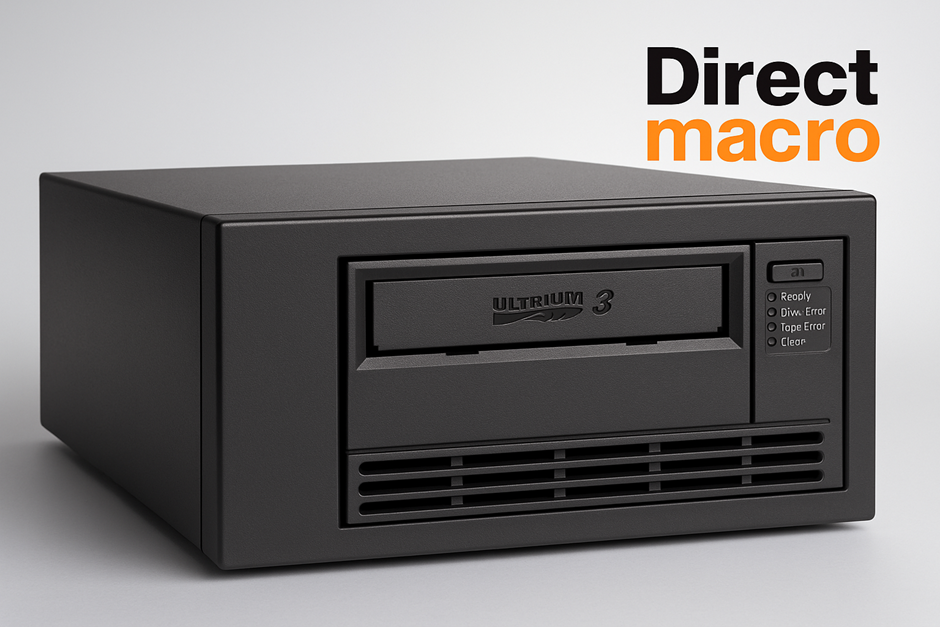
- Specifications: A restored half-height internal tape drive using LTO-6 technology. IBM LTO-6 Fibre Channel FH Tape Drive has a native capacity of 2.5TB per cartridge and a compressed capacity of up to 6.25TB. The drive uses an 8Gb/s Fibre Channel interface.
- Reasons To Buy: LTO-6 is a mature and cost-effective technology for long-term archiving where performance is not a top priority. The Fibre Channel interface provides dependable and high-speed communication for a Storage Area Network (SAN). Because it is reconditioned, it provides a reasonable entry point into tape backup for small to medium-sized organizations.
- Reasons To Avoid: It is an older technology, several generations behind the current LTO-9 standard. Its smaller capacity (2.5TB native) necessitates additional cartridges for bigger datasets, and sequential access is slow for file retrieval. It also lacks the most advanced security and functionality seen in subsequent models.
2. Storage Tek 419889308 LTO-4 Fibre Channel Full-Height Internal Tape Drive

- Specifications: A remanufactured full-height LTO-4 tape drive with a native capacity of 800GB and compressed capacity of 1.6TB per cartridge. It has a 4 Gb/s Fibre Channel interface.
- Reasons To Buy: This incredibly low-cost alternative is ideal for small organizations who need a tape backup solution for long-term archiving. It offers the air-gapped security advantage of tape medium, shielding against online threats.
- Reasons To Avoid: LTO-4 is an older, slower technology that has much lesser capacity than recent generations. This makes it inappropriate for enterprises with large data volumes or long backup windows. Its age and refurbished status may potentially indicate an increased risk of component failure.
3. HPE LTO-5 Fibre Channel Full-Height Internal Tape Drive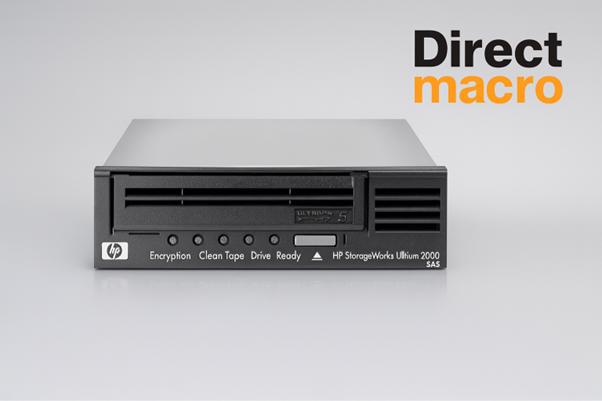
- Specifications: A refurbished LTO-5 tape drive with a native capacity of 1.5TB per cartridge (up to 3TB compressed). It features an 8Gb/s Fibre Channel interface and comes in a full-height form factor.
- Reasons To Buy: It improves performance and capacity over LTO-4 while remaining inexpensive. The Fibre Channel interface is compatible with current SANs, ensuring dependable communication for automated tape libraries.
- Reasons To Avoid: LTO-5 remains an outdated technology. Its capacity is significantly smaller than that of contemporary LTO standards, and its performance for modern backup windows will most likely be inadequate. The sequential access and physical management of cartridges remains a disadvantage.
Disk Drives
1. LG External BDRW-XL (WP50NB40)
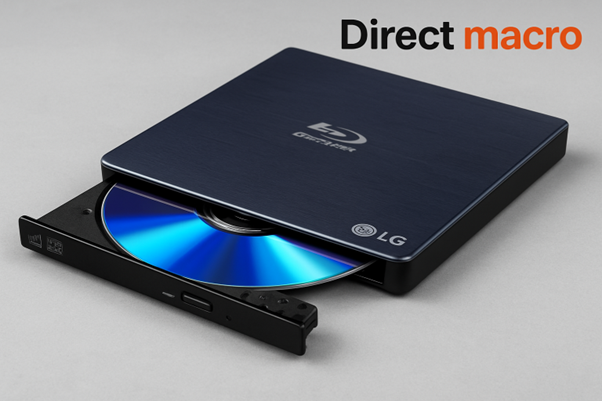
- Specifications: This portable LG External BDRW-XL (WP50NB40) supports 6X BD-R, 8X DVD-R, and 24X CD-R writing rates. It supports M-DISC for long-term archival storage and works with high-capacity BDXL discs (up to 100GB). The drive uses a USB 2.0 interface and has a 4MB buffer to ensure reliable burning. Silent Play reduces noise, and Jam less Play allows you to skip damaged disk parts during playing.
- Reasons To Buy: The key advantage is its M-DISC compatibility, which provides an extremely reliable way for long-term data archiving, as well as the option to use high-capacity 100GB BDXL discs for big backups. Its compact and portable design makes it ideal for use with laptops and ultrabooks, and the addition of playback features such as Silent Play makes it an excellent choice for silent movie viewing.
- Reasons To Avoid: The use of a USB 2.0 interface results in slower data transmission speeds than current USB 3.0 devices. The supplied CyberLink software is primarily for Windows, therefore Mac users must acquire their own Blu-ray playing software. Some users have also commented that the plastic case feels less expensive than other models.
2. Kanguru Slim Blu-Ray Burner (U3-BDRW-SL)
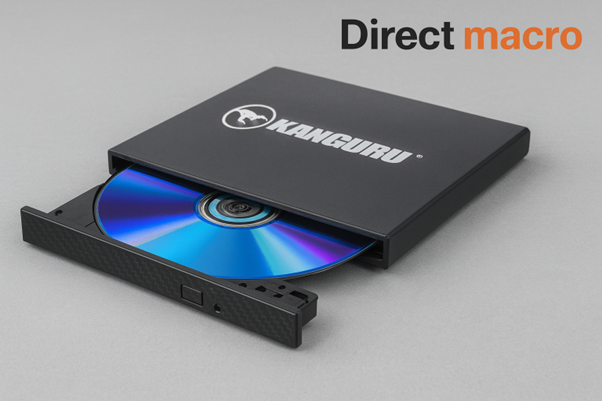
- Specifications: A professional-grade, TAA-compliant Kanguru Slim Blu-Ray Burner (U3-BDRW-SL) featuring a SuperSpeed USB 3.0 interface and BDXL disc compatibility of up to 128GB. This model has safe and digitally signed firmware that protects against “badUSB” assaults that make it ideal for high-security applications. It is USB powered and has buffer underrun protection to ensure consistent burning.
- Reasons To Buy: This drive is the most secure alternative, with digitally signed firmware and TAA compliance that makes it the preferred choice for government and business procurement. In comparison to the LG and Asus devices, the USB 3.0 interface allows for significantly quicker data transmission speeds. It also supports the highest-capacity 128GB BDXL discs, which are great for big data backups.
- Reasons To Avoid: Because of its enterprise-focused features, this drive is substantially more expensive for average customers. While it is plug-and-play compatible, the major OS support mentioned for Windows, and it gives minimal advantage over other versions for simple Blu-ray burning or playing outside of a high-security situation.
3. Asus Slim DVDRW (SDRW-08D2S-U/BLK/G/AS)
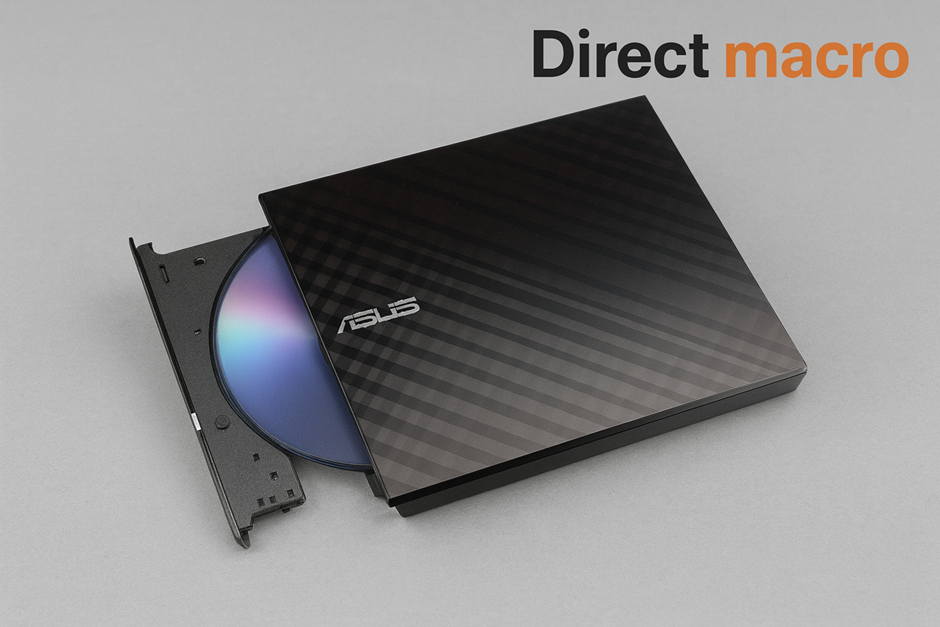
- Specifications: Asus Slim DVDRW (SDRW-08D2S-U/BLK/G/AS) external small DVD writer supports 8X DVD±R and 24X CD-R speeds. It connects via USB 2.0 and accepts M-DISC for DVD-quality archiving. It has a striking diamond-cut pattern and contains technologies such as CyberLink Power2Go and E-Green for energy savings and easy burning. This drive works with both Windows and Mac operating systems.
- Reasons To Buy: It is the most cost-effective and simple solution for consumers that only need DVD and CD read/write capabilities and do not require Blu-ray capability. Its plug-and-play ease and cross-platform interoperability make it a convenient option. The use of M-DISC technology enables for long-term data archiving, albeit at a reduced capacity.
- Reasons To Avoid: The biggest drawback of this disk drive is that it cannot read or write Blu-ray discs. It uses the slower USB 2.0 interface and lacks advanced features like as “Silent Play,” therefore its operation can be noisier than the LG model. This drive is unsuitable for consumers who require high-definition media or large-capacity storage.
Choosing Your Backup Winner
The ultimate backup showdown does not end with a knockout. Instead, it concludes with a strategic combination that achieves the best of both worlds. Choosing the right one is critical for both personal and professional needs. Here are some suggestions for when to use tape storage vs disk storage, or a hybrid approach.
When To Choose Tape Storage
- Long-Term Archiving: Tape is a highly reliable and low-cost solution for storing data for years or decades. It is common practice in highly regulated industries to ensure compliance.
- Ransomware Protection: Tapes provide an extra layer of protection against online cyberattacks as a physically air-gapped backup copy that cannot reach offline media.
- Large, Infrequently Accessed Data: Businesses with massive and rarely accessed data sets, such as media and entertainment or scientific research, use tape to store large amounts of data at a low cost.
When To Choose Disk Storage
- Fast Backup and Recovery: Disk is the best option for operational backups and disaster recovery scenarios where low recovery time objectives (RTO) and recovery point objectives (RPO) are essential.
- Frequently Accessed Data: For data that must be accessed frequently or on demand, disks’ fast random-access capability is critical.
- Ease of Use: Disk-based backup solutions are more automated and manageable than tape libraries. It requires fewer manual interventions.
- Data deduplication: Modern disk systems can optimize storage space and increase resilience through software features such as deduplication and replication, which are less effective or unavailable on tape.
When To Choose Hybrid Approach
Many organizations use a hybrid approach that takes advantage of the strengths of both technologies which are known as a disk-to-disk-to-tape” (D2D2T) strategy.
- Disk For Fast Backups: Frequently updated data is backed up to a disk-based system for quick, daily access and rapid recovery.
- Tape For Long-Term Archives: Data that is no longer needed for daily operations is moved to tape for secure, long-term, and cost-effective offline storage.
Understanding the strengths and weaknesses of tape and disk storage can help you create a backup strategy that protects and makes your data accessible, even in challenging situations.
Final Thoughts
When deciding between magnetic tape vs disk backup, it is important to consider your company’s unique requirements. Disk is the clear winner for organizations that value speed and agility. It includes businesses that require frequent data backups and restores, such as e-commerce or high-volume transaction-based companies. Disk storage provides faster RTOs, which can be critical for business continuity.
Tape Storage, on the other hand, is the more practical option for enterprises with large, infrequently accessed data archives, such as media companies, financial institutions, or research labs. Its low long-term cost and energy efficiency make it ideal for long-term data retention for legal compliance or historical purposes. Many modern tapes include the write once, read many (WORM) features, which adds an extra layer of data integrity by preventing data from being accidentally overwritten.
To receive swift and dependable assistance for all your computer parts requirements feel free to call us at (855) 483-7810 or get in touch with our specialized team by completing a submission form.
Frequently Asked Questions
- Is tape backup outdated?
Tape backup is not outdated. LTO magnetic tape backup is still widely used by large enterprises and cloud providers due to its cost-effectiveness, long-term archival reliability, and superior air-gapped security against ransomware. - Which is faster? a tape drive or a disk drive?
A disk drive provides faster random access, such as retrieving a single file. Modern tape drives offer faster sustained transfer speeds for sequential access, such as full backups of large datasets. - What is the 3-2-1 backup rule?
The 3-2-1 backup rule is a data protection best practice that recommends keeping at least three copies of your data, two on different types of media and one offsite. A hybrid tape vs disk backup strategy, with one copy on disk and an offsite copy on tape, is an effective way to implement this rule.
Do you need advice on buying or selling hardware? Fill out the form and we will return.

Sales & Support
(855) 483-7810
We respond within 48 hours on all weekdays
Opening hours
Monday to thursday: 08.30-16.30
Friday: 08.30-15.30



